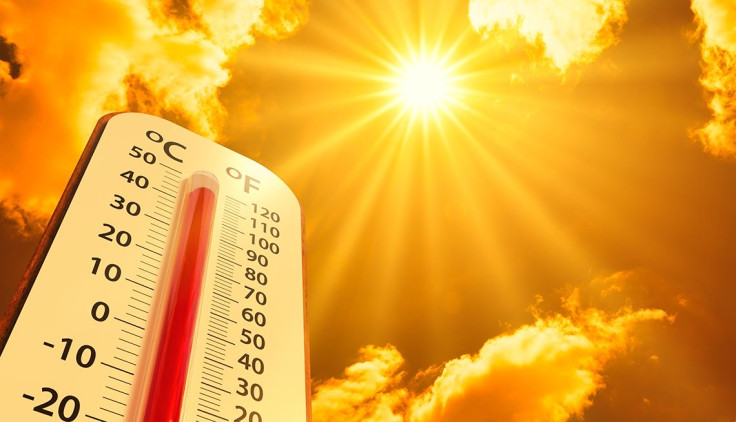As summer approaches, the National Oceanic and Atmospheric Administration (NOAA) has issued a forecast signaling above-average temperatures for much of the United States. The Climate Prediction Center (CPC), a division of NOAA, warns that the upcoming months could bring hotter-than-normal weather across a large portion of the country, raising concerns about heatwaves, drought, and increased energy demands.
This news is important for residents, businesses, and local governments as they prepare for the effects of a potentially intense summer season. Understanding NOAA’s forecast can help individuals take necessary precautions to stay safe and manage resources efficiently.
What NOAA’s Forecast Means for This Summer

The NOAA Climate Prediction Center uses advanced models and data analysis to predict temperature and precipitation trends months in advance. For the summer months of June, July, and August, the CPC expects:
- Above-normal temperatures across most of the U.S., particularly in the western, southern, and central regions.
- Increased chances of heatwaves in many states, especially in the Southwest and parts of the Southeast.
- Potential for drier conditions in some areas, which could raise the risk of drought and wildfires.
The forecast is based on multiple climate factors, including ocean temperatures, atmospheric conditions, and long-term weather patterns. A key influence this year is the weakening of La Niña conditions in the Pacific Ocean, which often correlates with warmer temperatures across the U.S.
Regions Most Affected by Above-Average Heat
The CPC’s predictions highlight certain areas expected to experience the strongest heat anomalies:
- Western United States: States such as California, Nevada, Arizona, and New Mexico are forecast to see significant temperature increases. These regions have already faced ongoing drought and wildfire concerns in recent years.
- Southern U.S.: Texas, Louisiana, and Florida may also experience hotter-than-average conditions, which could stress water supplies and energy grids.
- Central Plains: Areas in Kansas, Oklahoma, and Nebraska are likely to see temperatures rise above normal, affecting agriculture and outdoor work.
In contrast, some parts of the Northern and Northeastern U.S. may experience closer to average temperatures, though the general trend still points toward warmth overall.
Impacts of a Hotter Summer
A summer with above-average temperatures can have wide-ranging effects on society and the environment. Some of the key impacts to watch include:
- Health Risks: Prolonged heat increases the chances of heat exhaustion, heatstroke, and other heat-related illnesses, especially among vulnerable groups such as the elderly, children, and outdoor workers.
- Energy Demand: Higher temperatures often lead to greater use of air conditioning and cooling systems, potentially straining electricity grids and increasing energy costs for households and businesses.
- Water Resources: Drier and hotter conditions may worsen drought in some regions, impacting water supplies for farming, drinking, and industrial use.
- Agriculture: Crops can suffer from heat stress and lack of water, which may lead to lower yields and higher food prices.
- Wildfires: Hot, dry weather is a major factor in wildfire risk, particularly in the western U.S., threatening homes, wildlife, and air quality.
Preparing for the Hot Summer

Experts advise that preparation is key to managing the challenges of a hot summer. The following steps can help individuals and communities stay safe and reduce heat-related problems:
- Stay Hydrated and Cool: Drink plenty of water, avoid strenuous outdoor activities during peak heat hours, and use fans or air conditioning if available.
- Check on Vulnerable People: Regularly check on elderly neighbors, young children, and anyone with health issues.
- Conserve Water: Use water-saving techniques at home and follow any local water use restrictions.
- Prepare for Power Outages: Keep emergency supplies ready in case of electrical grid issues.
- Be Fire Safe: Follow wildfire warnings and be cautious with open flames or activities that could start fires.
Local and state governments will also be monitoring conditions closely and may issue heat advisories or warnings as needed.
The Science Behind NOAA’s Prediction
NOAA’s Climate Prediction Center combines historical data, satellite observations, and climate models to produce seasonal forecasts. This year, several factors are influencing the forecast:
- Transition from La Niña to Neutral Conditions: The Pacific Ocean’s cooler La Niña phase is ending, which generally leads to warmer summers in the U.S.
- Atmospheric Patterns: Changes in jet stream position and pressure systems can bring warmer air masses into the country.
- Climate Change: Long-term global warming trends contribute to increasing baseline temperatures, making extreme heat more frequent and severe.
These elements together help NOAA provide an outlook that helps guide decision-making for agriculture, energy management, public health, and emergency response.
How Businesses Can Prepare
For businesses, particularly those dependent on outdoor work or energy, understanding the forecast is crucial. Some ways businesses can prepare include:
- Adjusting work schedules to cooler parts of the day.
- Investing in heat mitigation strategies such as shade structures and cooling gear.
- Ensuring employee hydration and rest breaks.
- Reviewing energy usage plans to avoid peak demand charges.
- Monitoring supply chain risks related to weather impacts.
Companies in agriculture, construction, transportation, and energy sectors should pay special attention to NOAA’s updates as conditions evolve.
Looking Ahead
While NOAA’s prediction highlights a summer of hotter-than-normal temperatures, forecasts can be updated as new data becomes available. Staying informed through official sources such as NOAA’s Climate Prediction Center and local weather services will help individuals and communities adapt to changing conditions.
Planning ahead can reduce risks and ensure safety during a potentially challenging summer season.
Conclusion
NOAA’s forecast of above-average summer temperatures across much of the U.S. serves as a crucial warning for the public, businesses, and policymakers. With heatwaves, drought, and wildfire risks on the rise, proactive preparation is essential.
By understanding the forecast, taking simple safety steps, and staying updated with official information, Americans can better navigate the summer heat and protect their health and resources.
Also Read – Air Quality Worsens Across Midwest Due to Canada Fires






